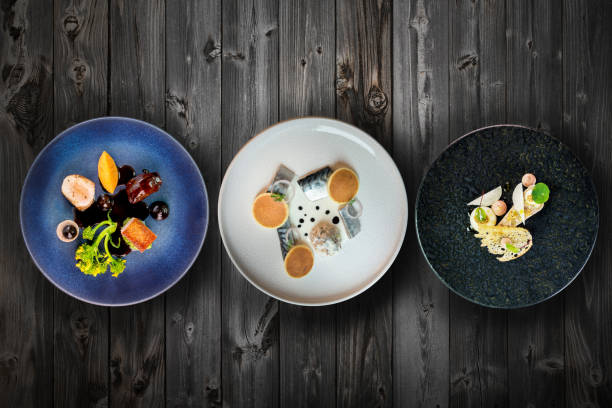The dining world has seen a renaissance of sorts with the emergence of tasting menus. These multi-course culinary journeys provide both chefs and diners with the opportunity to explore and push the boundaries of flavor, technique, and presentation. Tasting menus are not just a meal; they are an immersive experience, a symphony of tastes and textures that cater to the senses.
1. What Is a Tasting Menu?
A tasting menu is a carefully curated selection of dishes presented as a progression of courses. Typically, it includes smaller portions of various dishes, allowing diners to sample a wider range of flavors and ingredients. These menus are often designed to showcase the creativity and skill of the chef, making it an exciting culinary adventure.
2. The Origins of Tasting Menus
The concept of tasting menus can be traced back to France, where they were known as “dégustation” menus. The term “dégustation” translates to “tasting” or “sampling,” which perfectly encapsulates the essence of these menus. The idea was to offer diners a chance to explore the chef’s creativity and indulge in a wider array of flavors. Over time, this concept has spread worldwide, with chefs from various culinary traditions embracing the concept.
3. The Culinary Journey
A tasting menu is not just a meal; it’s a journey through the chef’s imagination. Each course is carefully designed to harmonize with the next, creating a seamless progression of flavors. The journey often begins with lighter, more delicate dishes and progresses to heartier and bolder flavors. This thoughtful arrangement enhances the overall dining experience.
4. The Chef’s Creative Canvas
Tasting menus provide chefs with a creative canvas to experiment with flavors, ingredients, and techniques. They can introduce seasonal and rare ingredients, infuse cultural influences, and present dishes that challenge traditional norms. This freedom allows chefs to showcase their culinary prowess and create a dining adventure that is both memorable and unique.
5. An Element of Surprise
One of the delights of a tasting menu is the element of surprise. Diners often don’t receive a menu in advance, relying on the chef’s selection and presentation. This surprise factor adds an air of excitement to the dining experience, as each course is unveiled, and diners eagerly anticipate what comes next.
6. Pairing with Wines
Many restaurants offer the option to pair each course with a carefully selected wine. The wine pairings enhance the flavors of the dishes, creating a complementary and harmonious experience. It allows diners to explore the interplay between food and wine in a more intricate way.
7. Dietary Preferences and Allergies
Most establishments that offer tasting menus are accommodating when it comes to dietary preferences and allergies. Diners can inform the restaurant in advance, and the chef will often tailor the menu to suit individual requirements. This customization ensures that everyone can enjoy the experience.
8. A Culinary Adventure for Food Enthusiasts
Tasting menus are especially popular among food enthusiasts and those who appreciate the art of gastronomy. They offer a rare opportunity to sample a wide range of dishes, some of which may not be available on the regular à la carte menu.
9. An Ideal Choice for Special Occasions
Tasting menus are a popular choice for special occasions. Celebrating an anniversary, engagement, or milestone birthday at a restaurant offering a tasting menu adds an element of extravagance and creates lasting memories.
10. The Importance of Timing
Tasting menus require time, as each course is thoughtfully prepared and presented. It’s essential to set aside ample time for the experience, allowing for unhurried enjoyment of each course.
11. Pricing and Value
Tasting menus can vary significantly in price, depending on the restaurant, the number of courses, and the ingredients used. While they may seem expensive, they often provide excellent value in terms of the quality and variety of food.
12. The Art of Presentation
The presentation of dishes in tasting menus is an integral part of the experience. Chefs meticulously craft each plate, paying attention to color, texture, and balance. The visual appeal adds to the overall sensory experience.
13. The Role of the Sommelier
Restaurants with tasting menus often employ a sommelier who assists diners in selecting wine pairings. The sommelier’s expertise elevates the dining experience by ensuring that the wines complement the flavors of each course.
14. Tasting Menus in Different Cuisines
Tasting menus are not limited to a specific cuisine. They are offered in various culinary traditions, allowing diners to explore diverse flavors and cooking styles. This diversity makes tasting menus accessible and enjoyable for a broad spectrum of food lovers.
15. An Unforgettable Culinary Adventure
In summary, tasting menus are a testament to the creativity and artistry of chefs. They offer diners a chance to embark on an unforgettable culinary adventure, where every course is a surprise, and each bite is a revelation. Whether you’re a seasoned food enthusiast or someone looking to elevate your dining experience, a tasting menu promises a unique and memorable journey through the world of flavors.

